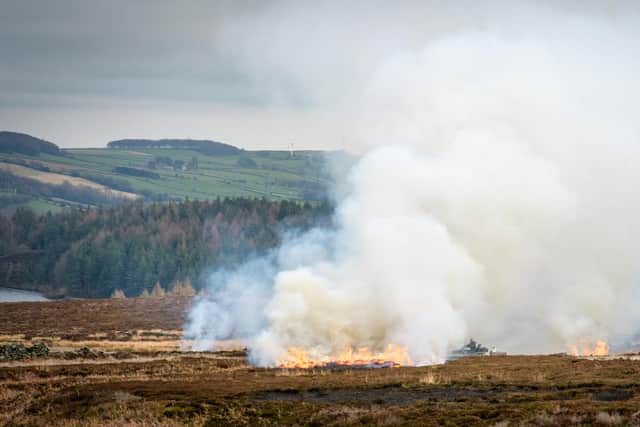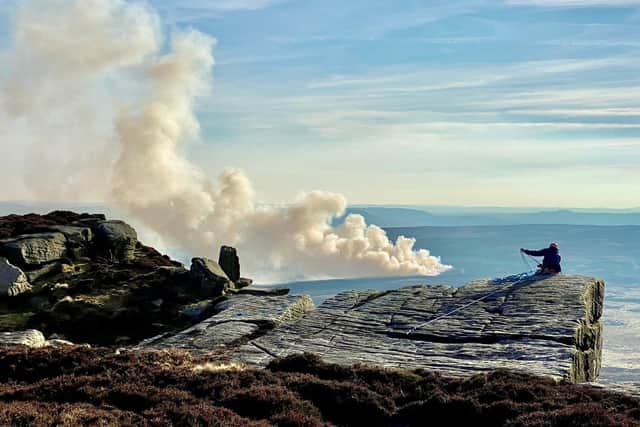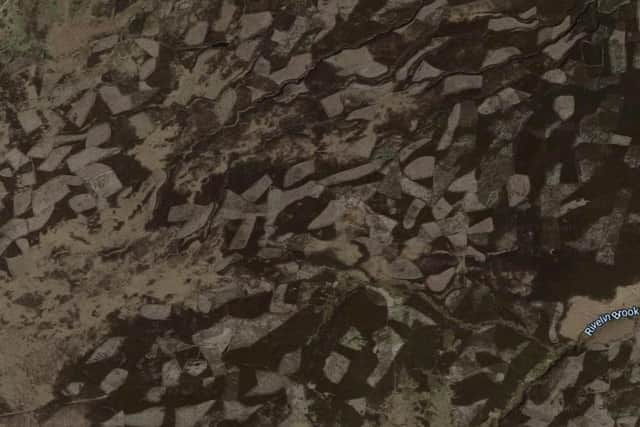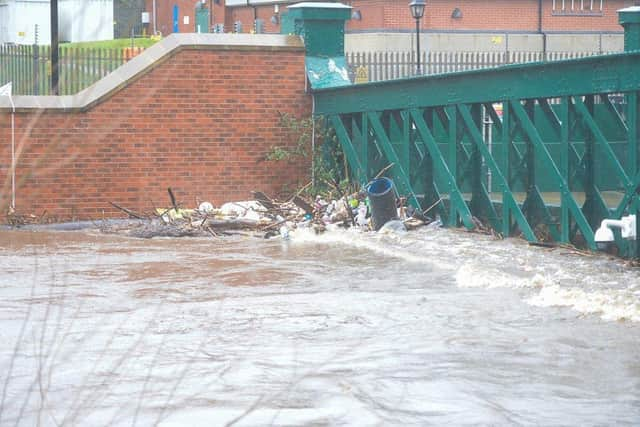Sheffield flooding: Row flares over burning grouse moors and whether it adds to flood risk
and live on Freeview channel 276
The shooting lobby says burned areas are better at absorbing water than ‘overgrazed’ grassland moors which have no heather, and in some cases it is even better than if the moors were rewilded and returned to woods.
Meanwhile, research shows that burning heather - which takes place between October and April - does not contribute to net global warming, it is claimed.
WHAT ARE ENVIRONMENTAL CAMPAIGNERS SAYING?


Advertisement
Hide AdAdvertisement
Hide AdBut environmental campaigners say peatlands contain important vegetation, such as sphagnum moss, which acts like a sponge to hold rainfall in the hills, which in turn helps to prevent flooding.
The debate flared again after storms Dudley, Eunice and Franklin led to flooding in Sheffield, although the city’s multi-million defences prevented disaster.
Sheffield is close to several shooting estates which are highly visible on satellite imagery for their patchwork of rectangles of burnt heather.


According to Wild Moors and environmental campaigners Bob Berzins and Guy Shrubsole, they are the Moscar Estate owned by the Duke of Rutland, the Broomhead Estate around Bolsterstone village owned by Ben Rimington-Wilson, Midhope moor (Langsett) owned by Dan Richmond-Watson, the Ladycross Estate (part of Pilkington Farms Partnership) and Strines (Bradfield Moors) owned by Sir Philip Naylor-Leyland part of the Fitzwilliam family.
Advertisement
Hide AdAdvertisement
Hide AdThey drain into rivers including the Loxley, Rivelin and Don.
Luke Steer, executive director of Wild Moors, said burnt areas of bare peat were like a ‘concrete path’ which water ran down.
HOW MUCH BURNING IS THERE?


The organisation had recorded 61 cases of heather burning in South Yorkshire since October, with ‘a lot more’ to come until April, he added.
But it was opposed by the RSPB and Natural England, while Defra had acknowledged the damage it caused through legislation.
Advertisement
Hide AdAdvertisement
Hide AdThe Peak District’s biggest landowners, Yorkshire Water, United Utilities and the National Trust, had banned burning on their land. And other big landowners the Peak Park and Sheffield City Council had also banned shooting.
WHO SUPPORTS MOORLAND BURNING?


That left just the grouse moorland industry – and it relied on research it paid for, claimed Mr Steer.
He said: “Only four per cent of England’s upland peatlands are in favourable condition, with burning being the largest driver of poor habitat condition in some of the nation's most protected sites.
“Sheffield, Barnsley and Doncaster councils are among the 13 local authorities which have teamed up with Wild Moors to encourage the Government to take urgent action to protect fragile moorland habitats by banning grouse moor burning.
Advertisement
Hide AdAdvertisement
Hide Ad“In recognition of the environmental damage caused by burning, the Government introduced a partial ban on the practice in May, acknowledging that ‘burning is damaging to peatland formation’ and ‘makes it more difficult or impossible to restore these habitats to their natural state’.
“However, many of Britain’s grouse moors, including many of those in South Yorkshire, are exempt from the new rules because they are located on degraded shallow peat, not blanket bog.
“This is despite them urgently needing to be restored to their healthier, deeper state to help tackle climate change, flooding and biodiversity loss.”


BUSINESS NEWS: Former Gaumont cinema will be giant new leisure venue
A spokesperson for the Moorland Association said: “Dealing with flooding is a horrendous issue and we have every sympathy for communities coping with the continuing aftermath of extreme weather events in catchments across England – most of which do not of course have any grouse moor management influence.
Advertisement
Hide AdAdvertisement
Hide Ad“There is simply no evidence that controlled burning of patches of heather on grouse moors contributes in any way to flooding in towns such as Doncaster, Sheffield or Rotherham.
WHAT ARE GROUSE MOOR MANAGERS SAYING?
“Our members are, in any case, at the forefront of natural flood defences in the form of peatland restoration and rewetting – we have removed over 4,000 miles of moorland drains that were installed historically to improve sheep grazing and we have restored over 27,000 hectares of peat to provide the ideal conditions for carbon sequestration and water retention.
“Despite this restoration work, in periods of extreme rainfall, the landscape will reach a tipping point. Water can only be held at the top of the hill for so long, which is when flood defences and other mitigation methods are also required to protect communities downstream.”
The British Association for Shooting and Conservation is ‘firmly in the camp’ that wetter is better when it comes to much of our uplands. However, it also believes there is ample opportunity for burning in the right place at the right time.
BUSINESS NEWS: Winding up petition puts 2,000 steel jobs at risk
Advertisement
Hide AdAdvertisement
Hide AdIt states: “The moors were originally drained and paid for by government grants back in the 1950s-70s as a way of improving the agricultural output of the uplands.
“Once drained, the dry and degraded peat no longer acts like a sponge soaking up rainfall. Instead, the gullies and grips get deeper, the water run-off increases, opening patches of bare peat, and as a result the drier peat releases carbon back into the atmosphere. As a large percentage of our rainfall is in the uplands, before flowing downstream, this can potentially cause problems.
“Keepers do not want bone dry moors with big open patches of peat (nobody does). The drier the moor the less insects, and thus no food for the grouse chicks. The more plant diversity, the more insects and the more for all birds to eat! So, keepers and moor owners have played a key part in re-blocking grips and gullies, rewetting moorland and increasing the species diversity and helping mitigate the downstream flood risk by slowing the flow.
“The latest research shows that good restoration burns improve the species diversity of vital water holding sphagnum mosses when compared to no management or mowing. This peat forming carbon locking moss can hold up to 26 times its dry weight in water (the equivalent of your average adult carrying a fully-grown rhino all day).”
The Duke of Rutland was approached for comment.
